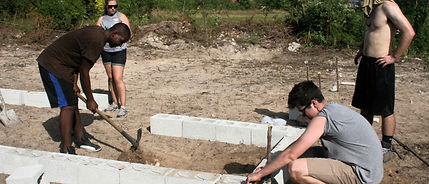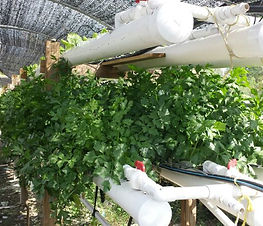top of page

Aquaponics

Aquaponics Systems
Aquaponics incorporates fish and plants into a sustainable closed loop food system. Bacteria convert fish excretions into nitrate, which are fertilizer for the plants, while plants serve as a water filter for the fish. The system created on campus includes three 6x44 foot beds. The aquaponics system uses ecological design to mimic natural processes, therefore providing students with lessons on food systems and ecology.

Community Involvement
The tilapia produced in the system will be used in local community events to engage the island and raise awareness about the school’s agricultural campus. Vegetables produced by the system are sold to local markets to reduce the amount of imported food.

This aquaponic system has five main parts: a 200-gallon fish tank connected by a PVC pipe to the second section of the system, the clarifier, which clears most of the solid matter from the system. The biofilter houses bacteria and algae for digestion of ammonia. The grow bed contains all of the plants in the system. The sump tank is the final stage and recycles the water back to the fish tank.
The water flows from the fish tank into the bottom of the clarifier ending with an elbow joint in the PVC pipe. The elbow design pushes the water around the bucket creating a vortex that gives the liquid a longer path throughout the system and results in more time for the solid waste suspended in the water to fall to the bottom of the clarifier.

The next piece of pipe is plumbud close to the top of the filter. As the water rises to the top of the tank it drains into the PVC pipe. This pipe leads into the third stage of the process, the biofilter. The suspended particles that remain in the water enter the biofilter. In the biofilter, ammonia is turned into nitrite and then nitrate by bacteria and algae that live within the system. This nitrate, a necessary component for plant growth, is moved into the next part of the system: the grow bed.

The grow bed is a structure lined with cinderblocks and is 44 feet long and 6 feet wide. With a depth of 1½ feet, a pond liner is placed along the surface of the bed in order to contain the water that would otherwise seep into the bedrock and back to the aquifers. The plants are then suspended, floating in the water on buoyant rafts. The insulation rafts are cut to house pots for the plants.

From the growing bed the water moves to the sump tank. The sump tank is entrenched at the deepest point of the system. This tank houses the pump, which recycles all of the water of the system. Once the water reaches the sump tank, it is pumped into the fish tank and the whole process is repeated.

bottom of page
